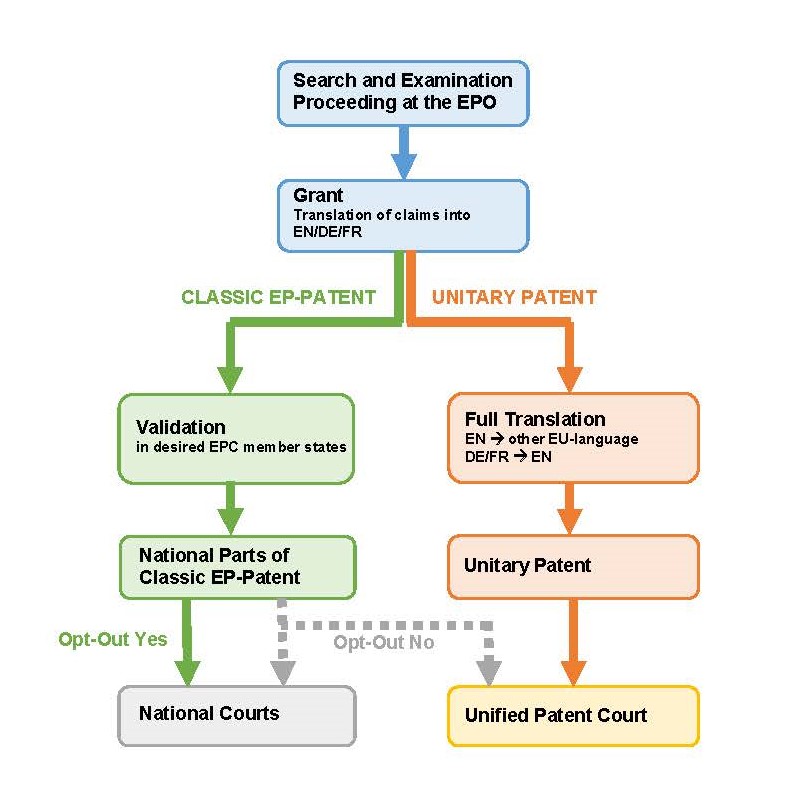Currently, the new European Unified Patent System is being implemented, which is planned to start on April 1, 2023. The introduction of the Unified Patent System will have an impact on all European patents, including “old” European patents that have already been granted and are in force. Please find below more information on the new Unified Patent System.
After the start of the European Unified Patent System, an applicant of a European patent application can choose between the following options after grant:
- European Unitary Patent which will be uniformly in force in (currently) 17 EU states, including Germany, France, and Italy. In Fig. 1 below, these are the EU states marked in blue.
- Classic European Patent, which will be validated in one or more of the 39 member states (including Montenegro as of October 1, 2022) of the European Patent Organization, as before. In Fig. 1, these are all states marked in blue and green.
- Mixture of the European Unitary Patent, which will be in force in 17 EU states (see Fig. 1 in blue), and the Classic European Patent, which will be validated in one or more of the remaining 22 member states of the European Patent Organization (see Fig. 1 in green).

The new Unified Patent System provides for a Unified Patent Court. Patent infringement proceedings or nullity proceedings relating to a Unitary Patent can be conducted centrally via this court. The Unified Patent Court is responsible for European Unitary Patents and for classic European Patents and thus also for “old” European Patents which are still in force. However, in the case of a classical European Patent, during a transitional period of between 7 and 14 years after the start of the Unified Patent System, the national courts in the countries where the classic European Patent is validated will have jurisdiction in addition to the Unified Patent Court as before. In other words, for example, patent infringement proceedings in the case of a Unitary Patent will take place centrally before the Unified Patent Court, whereas in the case of a classic European Patent, a choice can be made between the Unified Patent Court and the national courts.
A patentee of a classic European Patent has the possibility – during the transitional period mentioned above – to exclude the jurisdiction of the Unified Patent Court. For this purpose, it is necessary to file a so-called “opt-out-request” for the classic European Patent. After the exclusion of the Unified Patent Court due to an opt-out-request, the national courts will continue to have exclusive jurisdiction for the classic European Patent.
Fig. 2 below shows the different possibilities.

Figure 2: different possibilities regarding a European patent protection
An opt-out-request can already be filed 3 months before the start of the Unified Patent system in the so-called “sunrise period”. It is currently planned that the sunrise period starts on January 1, 2023. The question as whether an opt-out-request should be filed for a classic European Patent depends on the individual case. An opt-out-request is only possible as long as no action is pending before the Unified Patent Court.
Patentees and applicants of classic European Patents should take the following steps with regard to the new Unified Patent System:
- A patent proprietor of a classic European Patent should be aware in advance – i.e. preferably before the start of the sunrise period – whether an opt-out-request is necessary. If so, this should be filed during the sunrise period.
- If a classic European Patent has several patentees, they must jointly decide on a possible opt-out-request. They should therefore reach an agreement – preferably in writing – regarding a possible opt-out-request.
If you have any questions about the new Unified Patent System – for example, about the steps mentioned above – we will be pleased to answer them personally.